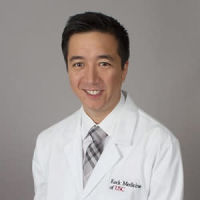New research from NYU Langone Medical Center predicts that, as the population ages, hospitals will require more neurosurgeons to handle the projected influx of patients needing treatment for chronic subdural haemorrhage (SDH). By the year 2030, SDH will surpass brain tumours to become the most common brain condition in adults that requires intervention by neurosurgeons, according to the study which has been published in the Journal of Neurosurgery.
Subdural haemorrhage refers to bleeding on the brain’s surface, typically caused by head trauma. It is also known as subdural haematoma. The condition frequently affects the elderly due to age-related brain atrophy and their greater use of anticoagulant medications. When delicate vessels between the surface of the brain and their protective coverings are even slightly damaged by trauma such as a fall, bleeding can accumulate and cause serious complications.
Contrary to popular belief, causative trauma leading to SDH may be minor; some patients do not remember incurring any head injury. Patients surgically treated for SDH have hospital stays significantly longer than those experienced by patients being surgically treated for brain tumours. Intensive physical therapy and rehabilitation is required for SDH patients more often than for patients who undergo other types of cranial surgery.
Uzma Samadani, MD, PhD and her colleagues examined US Veterans Administration (VA) hospital records from visits that took place between 2000 and 2012, in an attempt to quantify future incidence rates for chronic SDH in US veterans and civilian populations. Military veterans are at a relatively greater risk for SDH, although exact incidence rates in the US are not known. To generate a mathematical model, the researchers looked at data from Finland and Japan, two countries which keep accurate incidence reports.
Of the 695 new cases of SDH identified in the VA records, more than 70 percent occurred in patients who were at least 65 years old, with 29 percent of cases requiring surgical drainage. That translated to 79.4 cases of SDH per 100,000 veterans. Based on those findings, the researchers determined that by 2030, when as much as 25 percent of the US population will be older than age 65, chronic SDH will have an incidence of approximately 121.4 cases per 100,000 veterans, and 17.6 cases per 100,000 civilians in the general population.
“This study suggests that the medical community, particularly those caring for our ageing veterans, may need to dedicate more healthcare resources for the prevention and management of SDH,” said Dr. Samadani, the chief of neurosurgery at New York Harbor Health Care System and an assistant professor in the neuroscience, neurosurgery, psychiatry and physiology departments at NYU Langone Medical Center and its Steven and Alexandra Cohen Veterans Center for the Study of Post-Traumatic Stress and Traumatic Brain Injury.
“We have a very large population of elderly and the last of the 77 million baby boomers will have turned 65 by 2030. We can anticipate that 60,000 Americans per year will develop chronic SDHs. Knowing what is ahead of us gives us time to prepare,” Dr. Samadini said.
The research was supported by the US Department of Veterans Affairs, the Veterans Health Administration, the Office of Research and Development, Clinical Science Research and Development via the VA Merit Award, and by the Steven and Alexandra Cohen Veterans Center for the Study of Post-Traumatic Stress and Traumatic Brain Injury.
The other co-authors of the study are Sameer Farooq; Talha Mehmood, MD; Marleen Reyes, BA; and David Balser, BS, who received the American Heart Association medical student research fellowship for the study.
Source: NYU Langone Medical Center
Image Credit: Wikimedia Commons

























